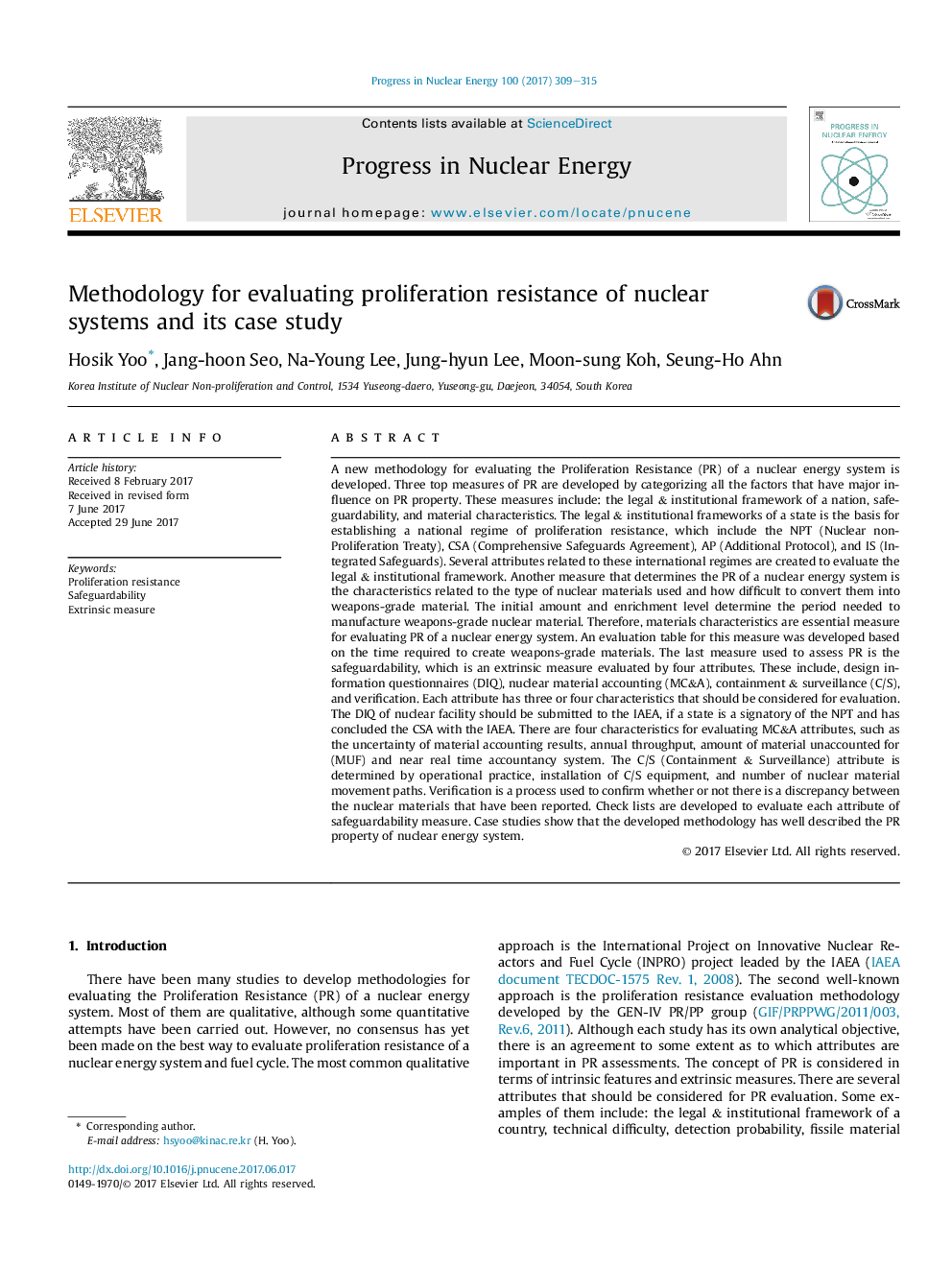| کد مقاله | کد نشریه | سال انتشار | مقاله انگلیسی | نسخه تمام متن |
|---|---|---|---|---|
| 5478189 | 1521738 | 2017 | 7 صفحه PDF | دانلود رایگان |
عنوان انگلیسی مقاله ISI
Methodology for evaluating proliferation resistance of nuclear systems and its case study
ترجمه فارسی عنوان
روش شناسی برای ارزیابی مقاومت در برابر تکثیر سیستم های هسته ای و مطالعه موردی آن
دانلود مقاله + سفارش ترجمه
دانلود مقاله ISI انگلیسی
رایگان برای ایرانیان
کلمات کلیدی
مقاومت در برابر تکثیر، قابلیت اطمینان، اندازه گیری بیرونی،
موضوعات مرتبط
مهندسی و علوم پایه
مهندسی انرژی
مهندسی انرژی و فناوری های برق
چکیده انگلیسی
A new methodology for evaluating the Proliferation Resistance (PR) of a nuclear energy system is developed. Three top measures of PR are developed by categorizing all the factors that have major influence on PR property. These measures include: the legal & institutional framework of a nation, safeguardability, and material characteristics. The legal & institutional frameworks of a state is the basis for establishing a national regime of proliferation resistance, which include the NPT (Nuclear non-Proliferation Treaty), CSA (Comprehensive Safeguards Agreement), AP (Additional Protocol), and IS (Integrated Safeguards). Several attributes related to these international regimes are created to evaluate the legal & institutional framework. Another measure that determines the PR of a nuclear energy system is the characteristics related to the type of nuclear materials used and how difficult to convert them into weapons-grade material. The initial amount and enrichment level determine the period needed to manufacture weapons-grade nuclear material. Therefore, materials characteristics are essential measure for evaluating PR of a nuclear energy system. An evaluation table for this measure was developed based on the time required to create weapons-grade materials. The last measure used to assess PR is the safeguardability, which is an extrinsic measure evaluated by four attributes. These include, design information questionnaires (DIQ), nuclear material accounting (MC&A), containment & surveillance (C/S), and verification. Each attribute has three or four characteristics that should be considered for evaluation. The DIQ of nuclear facility should be submitted to the IAEA, if a state is a signatory of the NPT and has concluded the CSA with the IAEA. There are four characteristics for evaluating MC&A attributes, such as the uncertainty of material accounting results, annual throughput, amount of material unaccounted for (MUF) and near real time accountancy system. The C/S (Containment & Surveillance) attribute is determined by operational practice, installation of C/S equipment, and number of nuclear material movement paths. Verification is a process used to confirm whether or not there is a discrepancy between the nuclear materials that have been reported. Check lists are developed to evaluate each attribute of safeguardability measure. Case studies show that the developed methodology has well described the PR property of nuclear energy system.
ناشر
Database: Elsevier - ScienceDirect (ساینس دایرکت)
Journal: Progress in Nuclear Energy - Volume 100, September 2017, Pages 309-315
Journal: Progress in Nuclear Energy - Volume 100, September 2017, Pages 309-315
نویسندگان
Hosik Yoo, Jang-hoon Seo, Na-Young Lee, Jung-hyun Lee, Moon-sung Koh, Seung-Ho Ahn,
